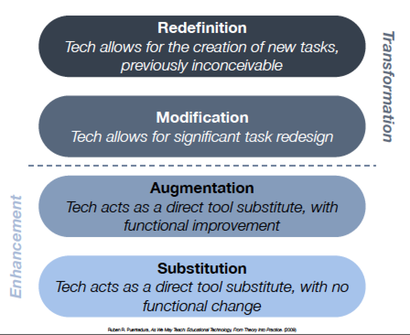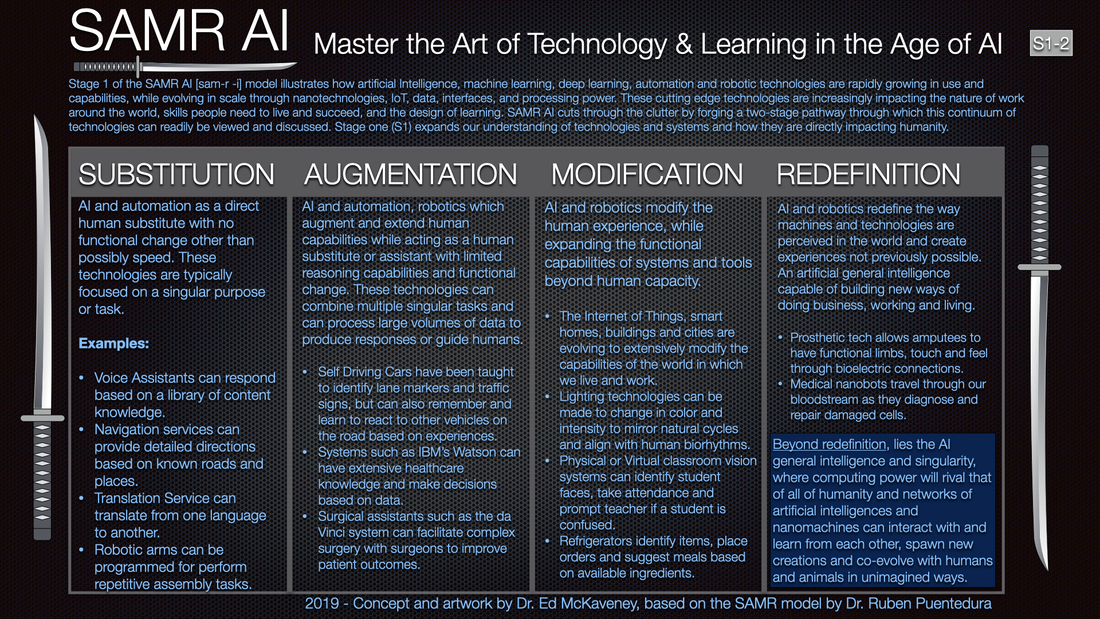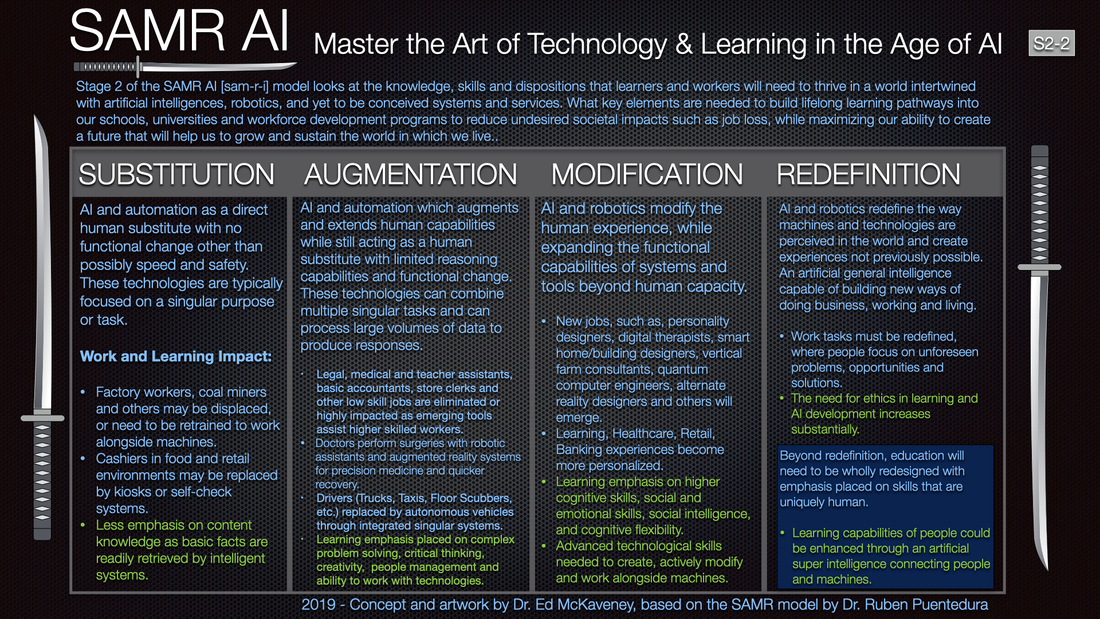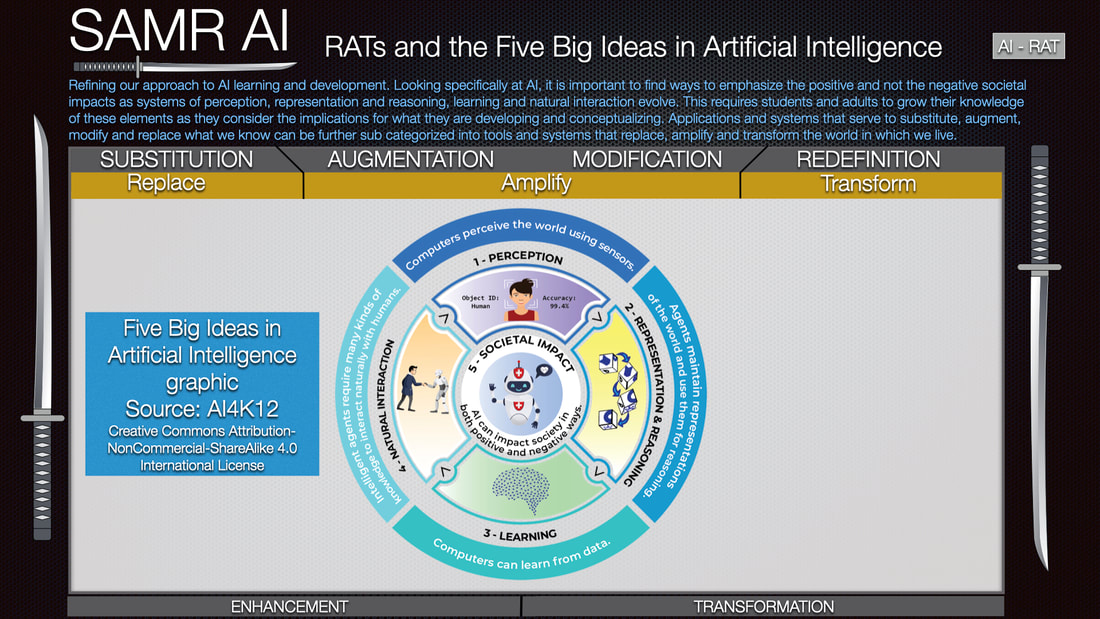This page offers resources to learning while providing a conceptual approach to building better understandings of artificial intelligence and the potential impacts to the world we live in. SAMR itself is a model developed by Dr. Ruben Puentedura, which provides a simplistic, yet readily conceptualized means of coupling technological tools with instructional goals, or work place tasks and assignments, in order to attain higher levels of achievement, improved instruction and increased productivity. The SAMR model provides a means of more effectively thinking about the appropriate utilization of technologies, as opposed to just substituting technology into instruction, or work environments, for the sake of using it. The SAMR model is typically looked at as a ladder, that can be climbed as people move from using technology as an enhancement for work and learning to truly transforming the one's practice. When implementing the ladder, it is perfectly fine to simultaneous move between different positions on the ladder, meaning, every task does not need to be redefined in a transformative way to effectively use technology and increase achievement or productivity. One advantage that the SAMR model has, is its ability to be coupled with other taxonomies and frameworks for work or learning, such as the digital Bloom's Revised Taxonomy, the Rigor/Relevance Framework, or in this case an approach to better understanding Artificial Intelligence.
The SAMR AI [sam-r -i] model illustrates how artificial Intelligence, machine learning, deep learning, automation and robotic technologies are rapidly growing in use and capabilities, while evolving in scale through nanotechnologies, IoT, data, interfaces, and processing power. These cutting edge technologies are increasingly impacting the nature of work around the world, skills people need to live and succeed, and the design of learning. SAMR AI seeks to forge a two-stage pathway through which this continuum of technologies can readily be viewed and discussed. Stage one (S1) expands our understanding of technologies and systems and how they are directly impacting humanity.
Stage two (S2) looks at the knowledge, skills and dispositions that learners and workers will need to thrive in a world intertwined with artificial intelligence, robotics, and yet to be conceived systems and services. What key elements are needed to build lifelong learning pathways into our schools, universities and workforce development programs to reduce undesired societal impacts such as job loss, while maximizing our ability to create a future that will help us to grow and sustain the world in which we live.
With this, SAMR AI seeks to identify and build relationships to other information models and resources in order to further refine approaches to AI learning and development. Looking specifically at AI, it is important to find ways to emphasize the positive and not the negative societal impacts as systems of perception, representation and reasoning, learning and natural interaction (as illustrated in the AI4K12 Five Big Ideas in Artificial Intelligence) evolve. This requires students and adults to grow their knowledge of these elements as they consider the implications for what they are developing and conceptualizing. Applications and systems that serve to substitute, augment, modify and replace what we know can be further sub categorized into tools and systems that Replace, Amplify and Transform (RAT) the world in which we live.



